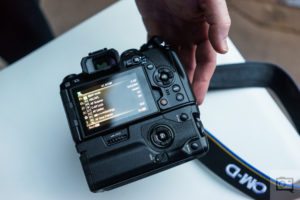
Photo: jorge mata / iStock / Getty Images Plus via Getty Images Capturing memorable moments with your camera is always a special feeling, but the process doesn't end there. If you want to edit or share your photos in some capacity, you'll also need to get them off your camera and onto your phone or computer.
With so many cameras – both new and retro – on the market, figuring out the best way to transfer your images can be confusing. In this guide, you'll find the various options for moving photos off your camera so you can share them with the world (or just your close circle).
Wireless transfer options
From left to right, the Sony, Canon and Nikon apps all allow wireless transfer.
If you have a relatively new camera, there are likely some wireless options for transferring photos that can be very convenient. First, many camera companies have developed apps, including Canon Camera Connect, Sony Creators App, Nikon SnapBridge, Panasonic Lumix Lab and Fujifilm XApp. The apps connect your mobile device to your camera via Wi-Fi or Bluetooth, allowing you to move files to your phone wirelessly.
Unfortunately, those apps can be very hit or miss. Essentially every brand's app has issues with unstable connections, leading to interrupted transfers. Slow transfers are also a common complaint, as are frequent app crashes and issues with transferring Raw files. Additionally, there may be an app for your camera brand, but it may no longer support your particular camera. Some are better than others, and issues may be device-dependent, but they can lead to frustrating experiences.
Outside of apps, some cameras support direct-to-cloud uploads, meaning you can send your images from the camera to a cloud service without first going through your phone or computer. Depending on your camera, you may be able to connect to services like Google Photos, Google Drive, Lightroom, Frame. io and more. It's a convenient option for backups, but like the above apps, reviews of direct-to-cloud features are mixed in terms of reliability. In most cases, you'll need Wi-Fi connectivity to use this option, which may not always be available, such as when shooting in remote areas.
Plug your camera in
Most recent cameras feature a USB-C port that can be used for data transfer.
Photo: Mitchell Clark
While wireless connections are ideal, their unreliability means you may have to use another method. Plus, if you have an older camera that doesn't support wireless transfers, you'll need a different way to transfer images.
Modern cameras feature USB ports that allow you to connect to a computer. USB-C has become the standard on recent cameras, though some older models may rely on Micro USB or Mini USB. This transfer method is simple but requires a USB cable that supports data transfer (some are charge-only).
With the right cable, once you plug into both your camera and computer, you generally only need to turn your camera on. Then, the camera will show up as a removable drive so that you can copy your images to your computer. However, very old digital cameras may not support transfer without a driver or software, which may not be supported anymore.
Use a card reader
Image: OWC
A card reader is one of the most reliable and fastest methods for transferring images from your camera to a computer or phone. That's especially true if you have a camera that doesn't work with the methods mentioned above.
Card readers are separate devices that plug into your computer or phone, though some computers may feature an integrated SD card slot. Some card readers are only compatible with one type of memory card, such as SD format, while others offer multiple slots for different types of cards.
The key is to know what type of card your camera uses so that you can get the correct card reader. A CompactFlash card, for example, won't fit in an SD card slot. Luckily, card readers are available for just about every format, including outdated ones like Memory Stick and xD.
Another thing to consider is that a card reader will impact the speed of file transfers. If you invested in fast memory cards and frequently need to transfer lots of files, especially large files, you'll also want to pay for a high-quality card reader with fast transfer rates. Budget readers are fine for more casual use, but will be slower.
. dpreview.com2025-8-13 16:00


















